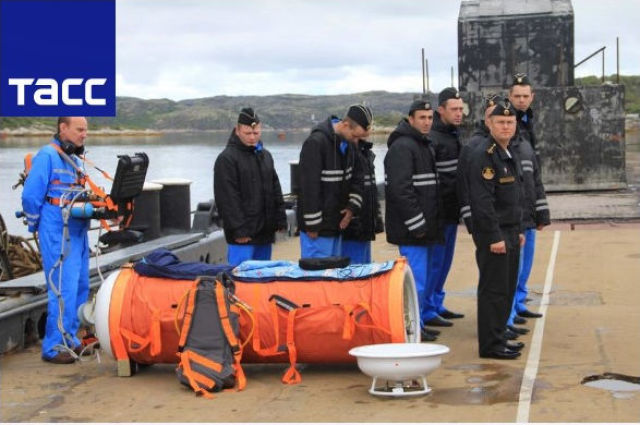We tell you how technologies for the rehabilitation of divers can be useful in conventional medicineOn March 19, Russia celebrates the Day of the Submariner.
Deep-sea work, as well as work in conditions of high pressure, are always fraught with danger and serious health risks. For many decades, Russian diving medicine has been researching factors that affect the activities of divers, caisson workers and representatives of a number of other professions. Today, the achievements of diving doctors are successfully and effectively integrated into general civil medicine, helping in the fight against the most serious ailments.
How technologies for the rehabilitation of divers were used during the pandemic, what scientists are ready to offer for the rescue of the wounded in a military special operation in Ukraine, and also why the Russian barocomplex "Savior" is the best in the world — in the material of TASS.From cosmonautics to underwater medicine
The Department of Hyperbaric Physiology and Diving Medicine was established as a structural unit of the Institute of Biomedical Problems (IBMP) in 1992. "Our main task is the safety of people, their preservation of health and efficiency. We must ensure that people who are in extreme conditions that differ from the conditions familiar to humans — in the same submarines — are healthy and able to perform their tasks," Viktor Mikhailovich Baranov, MD, professor, academician of the Russian Academy of Sciences, tells TASS.
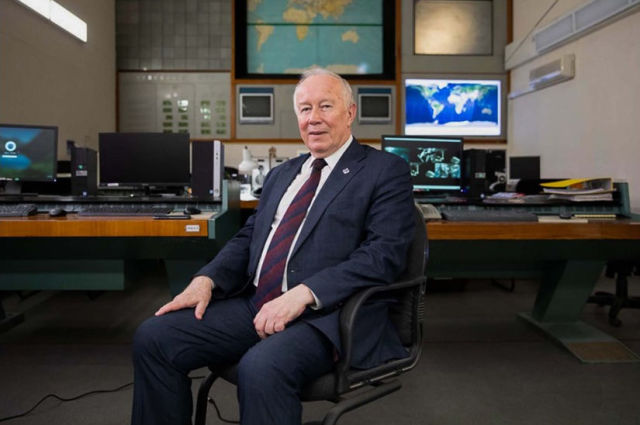 |
| Doctor of Medical Sciences, Academician of the Russian Academy of Sciences Viktor Baranov. |
| Source: Press Service of the IMBP RAS |
The main activity of the IMBP initially was and remains research in space medicine and biology, as well as medical support for space flights. All deep-sea diving dives and their imitation in pressure chambers until the 1980s were performed only by military organizations. The results of these works were classified, the topic of deep-sea research is still classified as "secret".
Back in Soviet times, the Ministry of Gas Industry needed an institute that would conduct scientific research on the activities of divers during the development of offshore fields. "There were certain objective reasons for this. By that time, the Institute was already researching the effect of pressure as a factor in the interests of aviation. The only thing in aviation is climbing to a height, and here, on the contrary, descent. The barometric pressure factor has a specific effect on the body. If we talk about the pressure drop, then one of its complications is decompression sickness, which can occur both when climbing to a height and when surfacing from a depth to the surface," Baranov notes.
By that time, the Institute's specialists were already working with artificial gas mixtures in the interests of cosmonautics. There was also a laboratory in the IMBP that dealt with high blood pressure issues. However, this was not enough for serious scientific activity. In 1978, a group of scientific staff of the Institute graduated from diving courses — without possession of diving equipment and appropriate training, it was impossible to conduct even model experiments. The following year, the staff of the IMBP were trained at the Department of Scuba Diving and Emergency Rescue of Professor I.A. Sapov - for the first time in the history of the Leningrad Military Medical Academy (Military Medical Academy named after S.M. Kirov). So civilian doctors got the right to conduct diving descents to a depth without restrictions.
Breathing mixtures for Olympians
In 1985, the IMBP was determined by the head research institute of the Ministry of Health of the USSR to solve medical problems of deep-sea diving descents, manned underwater vehicles, underwater vehicles and diving equipment. The formation of the Department of Barophysiology, barotherapy and diving medicine began, in which leading Russian specialists V.V. Smolin, G.M. Sokolov, B.N. Pavlov and many others made a huge contribution.
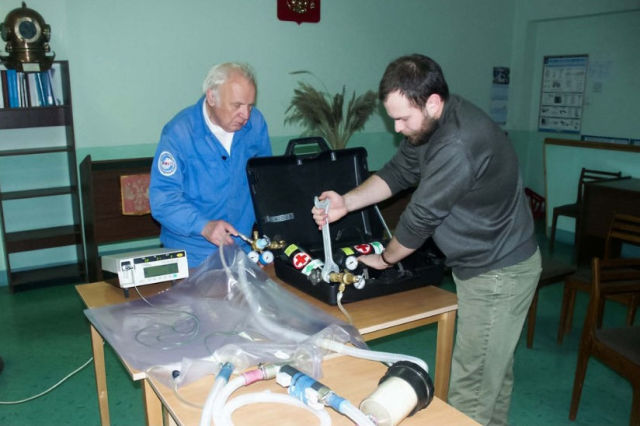 |
| Gennady Sokolov and Boris Pavlov during tests of the oxygen-xenon breathing apparatus. |
| Source: IMBP Press Service |
The list of achievements of the patriarchs of diving medicine is so extensive that it is simply impossible to list them in one article. One of the main successes of scientists is the creation of a technology for the treatment of decompression sickness by the method of long-term stay, thanks to which doctors can treat patients with severe degrees of the disease. The most important detail is that the technology makes it possible to successfully treat even so-called delayed cases when the patient sought help after a long time. And according to the guidelines developed by specialists on medical support for diving descents, not only specialized specialists, but also numerous divers are still being trained.
Currently, IMBP continues to conduct research on the use of artificial breathing gas mixtures for various purposes. "One of the tasks of diving medicine is to study the effect of the atmosphere that a diver breathes. Boris Nikolaevich Pavlov in his dissertation proved that inert gases are chemically inert, but have a biological effect. The study of their properties, the physiological effect of these gases, breathing under different pressures is one of the directions of the institute's current activities," Baranov notes.
In 2011-2012, the staff of the IMBP, commissioned by the Federal Medical and Biological Agency (FMBA) of Russia, conducted experimental studies of the effectiveness of the use of artificial breathing gas mixtures in the interests of Russian high-performance sports. The results were encouraging.
Also, at present, the IBMP continues to develop new decompression and therapeutic recompression regimes, as well as to improve existing regimes, the use of which makes it possible to prevent decompression sickness and other diseases in divers and caisson workers.
Diving equipment against COVID-19
During the coronavirus pandemic, Inhalit breathing devices with heated oxygen-helium mixtures were widely used, which can help the patient recover from the illness as soon as possible. Their creator is Alexey Timofeevich Logunov, General Director and Chief Designer of the Specialized Design Bureau (SKB) of Experimental Equipment at the IMBP. Logunov is a laureate of the award of the Government of the Russian Federation, Honored designer and tester of space and hyperbaric technology, engaged in the development of technical devices for space exploration and the expanses of the World Ocean.
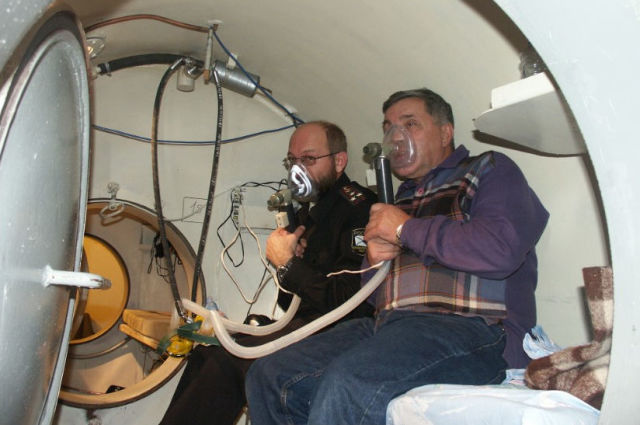 |
| Alexey Logunov, General Director and Chief Designer of SKB EO at IMBP, during the testing of the system of heated oxygen-helium mixtures "Inhalit". |
| Source: Press Service of SKB EO at IMBP RAS |
Initially, the portable device "Inhalit" was intended for emergency assistance to divers and divers in the absence of the possibility of barotherapy. It was also used to remove a person from a state of hypothermia — hypothermia. However, it later turned out that the range of application of the device is very extensive and includes both hypoxic human conditions resulting from complications of COVID-19 disease, and acute poisoning, pathology of the heart, lungs and a number of other ailments. Back in 1997, the device underwent clinical trials at the Research Institute of Pulmonology of the FMBA of Russia and proved itself well in the treatment of pulmonary and bacterial pneumonia. "The fact that "Inhalit" will be effective with COVID-19 — the conclusion was self-evident. If the device treats the lungs with such severe diseases, then why won't it treat covid? However, its use for covid turned out to be even more successful due to the special course of the disease," says Logunov.
Oxygen-helium therapy is based on breathing with a heated gas mixture of oxygen and helium supplied by a special device from a balloon. "Today, the Inhalit device is used by more than 80 medical institutions throughout Russia. Most of the devices are now in the city clinical Hospital No. 52 in Moscow. The chief doctor of the hospital was one of the first to evaluate and use the advantage of this method in COVID-19," Logunov notes. — I am sure that the method of supporting breathing with a heated oxygen-helium mixture was one of those innovative approaches that provided the lowest mortality rate in the country in Moscow Hospital No. 52."
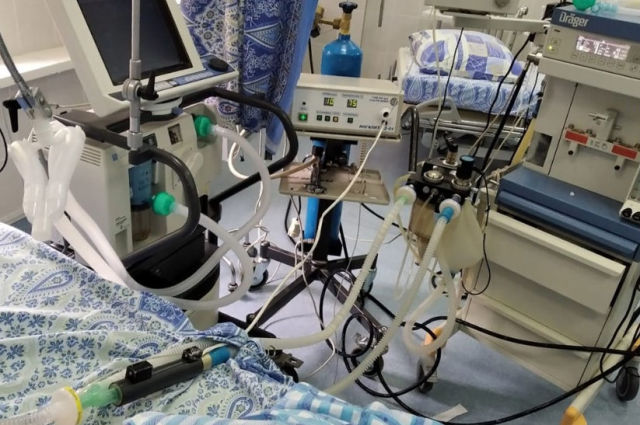 |
| The device "Inhalit-V2-01" in the intensive care unit. |
| Source: Press Service of SKB EO at IMBP RAS |
The son of an outstanding scientist in the field of diving medicine, B.N. Pavlov, Nikolai Borisovich Pavlov is the head of polyclinic No. 2 of the Federal Clinical Center for High Medical Technologies of the FMBA of Russia. The institution has become a flagship in the application of underwater medicine technologies in the treatment of COVID-19 and other diseases.
"Oxygen-helium inhalations are needed by a huge number of people today. Up to 70% of urban residents after the age of 65 suffer from chronic obstructive pulmonary disease. This type of therapy is necessary for many diseases associated with manifestations of respiratory failure, including pneumonia and bruises of the lungs," Pavlov notes.
What do divers' illnesses have in common with explosive trauma
Mine-blast injuries are very common on the battlefields of modern warfare. 60-70% of those wounded in a special operation in Ukraine fall under the blast wave. Of these, about 20% receive lung barotrauma, which may be accompanied by air bubbles entering the arterial bloodstream. And the methods of barotherapy, among other effects, are the most important means of combating bubbles that interfere with normal blood circulation.
The Inhalit devices were developed to treat hypothermia in sailors leaving an emergency inhabited underwater vehicle. The method of therapy with heated oxygen-helium mixtures is the most effective and safe "heater" of the body, but not only!
It turned out that with the help of heated oxygen-helium mixtures, breathing can be significantly facilitated (this effect was actively used in the treatment of COVID-19) and air bubbles trapped in the arterial bed can be removed. The latter is true if breathing with a life-saving heated gas mixture is carried out immediately after injury.
"Now we are discussing with the Ministry of Defense of the Russian Federation the possibility of delivering Inhalite to the front,— says Logunov.
In 2022, scientists sent a program to create a new class of medicines based on oxygen and inert gases and to create a unified treatment system for victims of pressure drop factors to the Russian Academy of Sciences for consideration. R&D is now expected to open. An important role in the implementation of the program is played by time, which is rapidly flowing away.
Advanced baroapparats of the Navy and not only
Specialists of the IMBP, together with the FMBA of Russia, have created a three-level system of assistance in the Navy (Navy). "This, of course, is the merit of Alexey Timofeevich and the leadership of the Navy medical service, who understood the need for these developments and their implementation," Baranov notes.
One of the elements of this system is the transport folding pressure chamber "Kubyshka", another unique development of Logunov. A small portable camera is indispensable when evacuating a person with decompression disorder to a stationary pressure chamber, where the victim will undergo a full course of treatment. There are no analogues of "Kubyshka" in Russia.
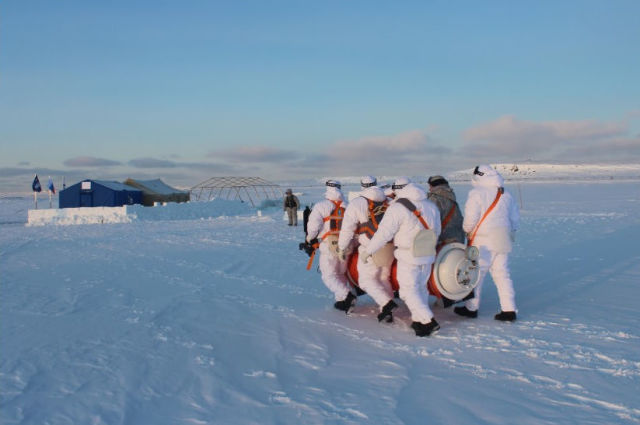 |
| Tests of the transformable pressure chamber "Kubyshka" in the Arctic. |
| Source: Press Service of SKB EO at IMBP RAS |
"The camera is equipped with a life support system. "Kubyshka" became a breakthrough in the method of delivering the victim from the scene to the barocomplex. All similar foreign products are absolutely inferior to ours in terms of technical characteristics and are not equipped with a life support system. Subsequently, we refined the system, and it became possible to carry out therapeutic regimes in it, so many use it as a pressure chamber on duty in hard—to-reach places," Logunov emphasizes.
According to the expert, the light weight — about 70 kg — is another huge advantage of the "Cup". Four people are required to transport the camera. Whereas for the use of similar foreign products, a special truck was previously fitted, and the camera was removed using a crane. "The fact that this camera is unique is the generally accepted opinion of experts. We are very pleased with this. This is a domestic development that is now working in the interests of the Navy," says Baranov.
In 2021, a deep modernization of the chamber was completed: gas analyzers and a system for removing harmful impurities were added. "Practically, we have made a small soft barocomplex. Now the task is to modernize all the existing "Cubes" that have not expired the warranty period," says Logunov.
According to the idea of the creators, the "Cup" is an integral element of the advanced Russian barocomplex "Savior", also developed by Logunov. The "cup" is part of this complex, the patient can be seamlessly transferred from one environment to another — this is a very important point that is difficult to observe," Pavlov notes.
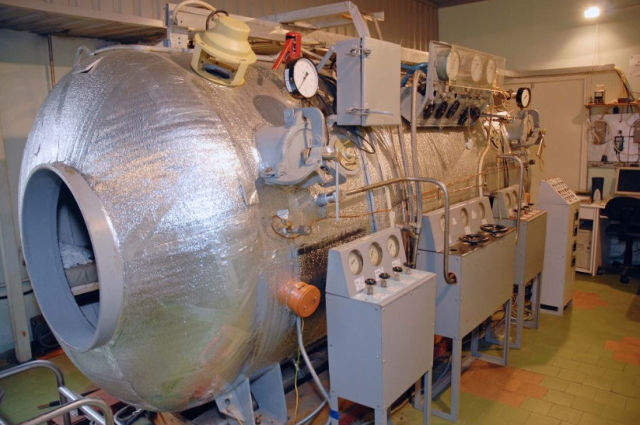 |
| Barocomplex "Savior". |
| Source: ress-service of IMBP |
"Saviour" is intended for the treatment of decompression diseases, but in reality, like "Inhalit", it can be used to treat many diseases, including COVID-19. There are two points on the wall of the complex for introducing a heated oxygen-helium mixture directly into the chamber.
"Now we have been given the task to upgrade the camera and install six similar points, at the same time six people will be able to receive treatment. Work on the modernization of the Savior will begin in 2023," Logunov concludes. — At the moment, there are several such barocomplexes in the military operating on the territory of Russia. The generally accepted development program assumes the creation of six more civilian centers in the FMBA of Russia."
Ekaterina Adamova
